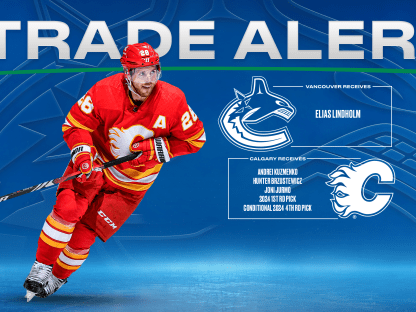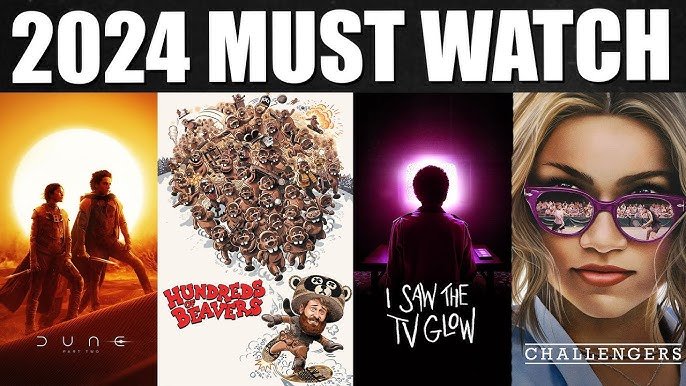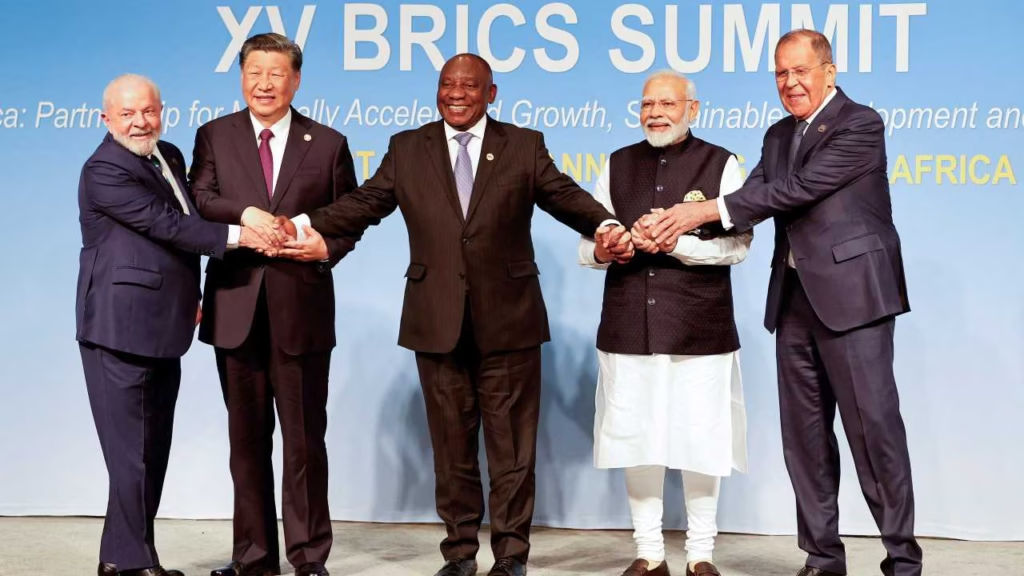
The Vancouver Canucks have been in the spotlight recently with several rumors and speculations regarding their trading activities. The concept of Canucks trading players, prospects, and draft picks has been a critical part of the franchise’s strategy over the years. In this article, we’ll explore the different aspects of Canucks trading, from historical trends to the current strategies under the management of General Manager Patrik Allvin and Head Coach Rick Tocchet.
Understanding Canucks Trading: A Historical Overview
The Evolution of Canucks Trading Strategy
The Canucks trading strategy has evolved significantly over the years, driven by the team’s changing goals, roster needs, and financial situations. Early in the team’s history, the Canucks were relatively conservative in their approach to trades. They mainly focused on player development and tried to build their core from within. However, as the franchise faced more competition and a desire to contend for a Stanley Cup, the Canucks trading strategy became more aggressive.
In the late 1990s and early 2000s, under the leadership of General Manager Brian Burke, the Canucks made significant trades to add key pieces like Pavel Bure and Trevor Linden, marking the shift towards trying to build a competitive roster for the playoffs. As the franchise progressed through the years, some trades have been seen as successful, while others have led to controversy, especially when they involved trading away fan-favorite players or making moves that didn’t immediately pay off.
The 2011 Stanley Cup run under Coach Alain Vigneault and GM Mike Gillis was the pinnacle of Vancouver’s trading strategy. During that time, the team acquired key pieces like Maxim Lapierre and Chris Higgins, moves that helped solidify their playoff roster. These trades were pivotal in creating a competitive team that came within one game of winning the Cup.
Key Trades in Canucks History
Over the years, the Canucks trading history has included both pivotal moves and regrettable deals that fans continue to debate. Several of these trades are etched in the memory of the Canucks’ fanbase, some for their brilliance and others for their controversy.
- The Pavel Bure Trade (1999): One of the most emotional trades in Canucks history, Pavel Bure, the Russian Rocket, was sent to the Florida Panthers in exchange for a package that included draft picks and players. While the trade freed up cap space for the Canucks to build around, Bure’s departure still stings for many fans. He remains one of the franchise’s greatest players.
- Roberto Luongo Trade (2006): Acquiring Roberto Luongo from the Florida Panthers was a trade that defined the Canucks’ goaltending situation for years. Luongo became the face of the franchise and led them to multiple playoff appearances. The deal saw the Canucks send Todd Bertuzzi, Bryan Allen, and Alex Auld to Florida for the elite goaltender.
- The 2019 Trade of Erik Gudbranson to Pittsburgh: This trade, which saw the Canucks offload the physical defenseman to the Pittsburgh Penguins, was part of the team’s move toward a faster, more skill-oriented approach. While Gudbranson was popular for his toughness, this trade represented a shift towards a more balanced defensive unit.

The Current State of Canucks Trading Under New Management
GM Patrik Allvin’s Approach to Trading
Patrik Allvin took over as the general manager of the Vancouver Canucks in 2021, and his vision has already made an impact on the team’s trade strategy. Allvin, who had previously worked with the Pittsburgh Penguins, is known for his analytical approach to roster construction. His decision-making has focused on long-term sustainability while ensuring the team remains competitive.
Allvin has been tasked with navigating the challenging salary cap situation that the Canucks have faced for several years. This means Canucks trading has not been about making big, splashy moves but rather focusing on strategic acquisitions and letting go of players whose contracts may not align with the team’s financial situation.
In his first seasons with the Canucks, Allvin has focused on building a team around the core of Elias Pettersson, Quinn Hughes, and Thatcher Demko. While the Canucks have made some significant moves, such as the Bo Horvat trade, the overall strategy has involved trying to balance the team’s short-term competitiveness with long-term financial health.
The Role of Coach Rick Tocchet in Trades
Rick Tocchet, who took over as head coach in 2023, has added another layer of influence to the Canucks trading strategy. Known for his gritty, defensive-minded coaching style, Tocchet has influenced the team’s roster decisions, pushing for more balance between offensive skill and defensive reliability. While he does not have the same level of authority over trades as GM Allvin, Tocchet’s system and player preferences shape the kinds of players the Canucks target in trades.
Tocchet’s emphasis on physicality, defense, and team-first mentality means that the Canucks are more likely to pursue players who fit his system — ones who can contribute in both ends of the ice. This has led to speculation that the Canucks may trade for more defensively responsible forwards or tough, shutdown defensemen as part of a broader team-building strategy under Tocchet’s leadership.
Key Recent Trades Under Allvin and Tocchet
The trades made under Allvin and Tocchet reflect the direction the Canucks want to take as a franchise. While big-name trades have been rare, several key moves have reshaped the team’s roster.
- Bo Horvat Trade (2023): Perhaps the most high-profile trade during Allvin’s tenure, the Canucks sent captain Bo Horvat to the New York Islanders in exchange for Aatu Raty, a top prospect, and a first-round draft pick. This trade was part of a larger move to transition the team from a rebuild to a retool, signaling that the Canucks were prioritizing future assets.
- J.T. Miller Contract Extension (2023): J.T. Miller, one of the Canucks’ top forwards, was signed to a seven-year contract extension, signaling that the team is committed to him as a core piece. While not a trade, this decision impacts the trade market because it means the Canucks will likely focus on trading other players to balance the roster and cap situation.
Canucks Trading and the Salary Cap Situation
Managing the Cap: A Key Factor in Trading Decisions
One of the most pressing challenges for the Vancouver Canucks is managing their salary cap. The NHL’s salary cap limits the amount of money a team can spend on player salaries, which has forced the Canucks to make difficult decisions regarding their roster and Canucks trading activity. As of recent years, Vancouver’s cap situation has been tight, with long-term contracts and aging players absorbing much of the team’s cap space.
Players like Oliver Ekman-Larsson and Tyler Myers have multi-year contracts with high cap hits, which complicates the Canucks’ ability to add pieces through trades. These contracts have been a significant factor in Canucks trading strategy, as the team has often needed to offload players in exchange for younger, less expensive talent.
Allvin and his staff are constantly looking for ways to navigate these cap constraints. Often, this means trading players with high salary cap hits for assets that provide greater flexibility. Such trades have become vital for the Canucks as they aim to remain competitive without overburdening themselves financially.
Salary Dumping in Trades
The concept of salary dumping plays an important role in Canucks trading decisions. This strategy involves trading players who have high cap hits or expensive contracts in exchange for players who are on cheaper deals or who may offer less immediate return but provide the team with more long-term financial flexibility.
For instance, trades involving veterans such as Jason Dickinson have allowed the Canucks to free up cap space. While these trades might not yield immediate top-level players in return, they are essential for maintaining flexibility and positioning the team to make future moves in free agency or through the trade market.
The Future of Canucks Trading: What’s Next?
Prospects and Draft Picks: The New Currency
As the Canucks continue to rebuild, Canucks trading has shifted to focus more heavily on acquiring future assets. The franchise now places greater emphasis on acquiring draft picks and prospects, with the hope that these young players will one day contribute to the team’s success.
The Canucks have built a strong farm system in recent years, and their prospects have become highly valued trade assets. With top-tier players like Elias Pettersson and Quinn Hughes already on the roster, the Canucks’ focus is now on supplementing their core with young, talented players who can make an impact in the NHL down the line.
Trades that focus on future potential are becoming more frequent. For example, the trade of Bo Horvat to the New York Islanders in exchange for prospects and a first-round pick reflects the team’s strategy of stockpiling assets that will pay dividends in the years to come.
Trade Deadline Moves
The NHL trade deadline is one of the busiest periods for Canucks trading activity, as teams look to make adjustments for the final stretch of the season. For the Canucks, the trade deadline is a time to evaluate their standing in the playoff race and decide whether they should add players to bolster their chances or offload veterans for future assets.
In recent seasons, the Canucks have often been sellers at the trade deadline, shipping out players on expiring contracts in exchange for draft picks or prospects. As the team continues to evolve, it is likely that the 2024 trade deadline will feature similar activity, with the Canucks assessing their position in the standings before making any major moves.
Impact of Canucks Trading on the Fanbase
The Emotional Side of Trading
One of the biggest challenges with Canucks trading is the emotional impact it has on fans. The Canucks have a passionate and loyal fanbase, and trades that involve popular players can stir up strong reactions. Fan favorites like Bo Horvat or Alexandre Burrows leave a lasting legacy, and when these players are traded, it can be difficult for fans to adjust.
While management focuses on building a competitive team, the emotional toll of trading beloved players cannot be underestimated. Understanding the emotional aspect of trades is important for the Canucks’ front office, as they strive to maintain a connection with their fanbase while making difficult decisions.
Communication and Transparency with Fans
The Canucks’ front office has worked to improve communication with their fans, especially during times of significant roster changes. Transparent communication about the team’s plans and the rationale behind key trades can help ease the fanbase’s concerns and foster a sense of trust. By clearly explaining how trades fit into the long-term vision, the team can soften the blow of trading away key players.
Conclusion: The Ongoing Journey of Canucks Trading
Canucks trading has always been a central part of the team’s strategy, and it will continue to shape the future of the franchise. From historical moves to the current approach under Patrik Allvin and Rick Tocchet, the Canucks’ trading activity is vital to their ability to stay competitive in the NHL. Through thoughtful, strategic moves, the team can build for both the present and the future.
As the Canucks continue to evolve, Canucks trading will remain a critical tool in their efforts to retool, rebuild, and ultimately return to the playoffs. The team’s ability to make the right moves, manage the salary cap, and develop prospects will be key to their long-term success.
FAQs
1. Why did the Canucks trade Bo Horvat?
The Canucks traded Bo Horvat to the New York Islanders in 2023 as part of a long-term strategy to rebuild the team. Horvat was a fan favorite, but the team received a valuable package in return, including top prospect Aatu Raty and a first-round pick. This trade allowed the Canucks to clear salary cap space and prioritize younger assets.
2. What is salary dumping in NHL trades?
Salary dumping refers to the practice of trading a player with a large salary cap hit in exchange for a lesser contract or future assets. Teams typically use this strategy to create cap space for future acquisitions or to balance their roster.
3. How does Rick Tocchet’s coaching style influence Canucks trading?
Rick Tocchet’s defensive-minded coaching style has influenced the team’s roster decisions. Under Tocchet, the Canucks have focused on acquiring players who can contribute defensively and fit into a balanced, two-way system. This emphasis on team-oriented play impacts the type of players the Canucks target in trades.
4. How does the salary cap affect Canucks trading?
The NHL’s salary cap is a major consideration in Canucks trading decisions. Vancouver has had to manage its cap space carefully, offloading expensive contracts to free up room for future acquisitions. Managing the cap is crucial for the Canucks to maintain competitiveness while avoiding financial constraints.
5. What is the future of Canucks trading?
The future of Canucks trading will likely involve focusing on building for the long term through draft picks and prospects. As the team’s core players like Elias Pettersson and Quinn Hughes continue to develop, the Canucks will focus on acquiring young talent and clearing cap space to stay competitive.


